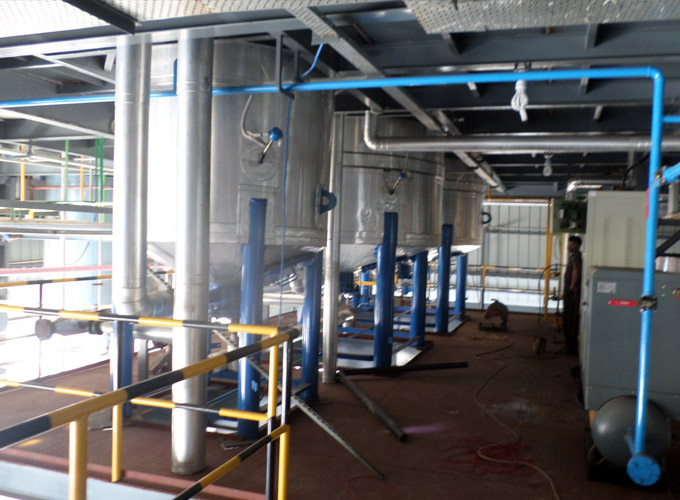The soya oil refining process is a critical step to transform crude soybean oil into purified, edible oil suitable for consumption and various industrial applications. This process removes impurities such as free fatty acids (FFAs), phospholipids, waxes, pigments, and volatile compounds that can affect the taste, color, and stability of the oil. The refinement of soybean oil is essential for producing a high-quality product that meets food safety and quality standards.
The main steps of the soya oil refining process include degumming, neutralization (alkali refining), bleaching, deodorization, and sometimes winterization. Let’s go over these steps in detail.
1. Degumming
Purpose: Degumming is the process of removing phospholipids (gums) from the crude soya oil. These compounds can cause the oil to be unstable and degrade over time, affecting the quality of the oil.
Process:
- Water Degumming: Water or dilute acid is added to the crude oil to hydrate the phospholipids, making them insoluble in the oil. The gums then form a separate phase and can be removed by centrifugation.
- Enzymatic Degumming: Enzymes can also be used to break down phospholipids, which allows for easier removal and results in a higher-quality oil.
Result: The degumming process produces a more stable oil that is less prone to oxidation and other quality issues during storage.
2. Neutralization (Alkali Refining)
Purpose: Neutralization is the process of removing free fatty acids (FFAs) from the oil, which can cause the oil to have an off-taste and reduce its shelf life.
Process:
- An alkali, typically sodium hydroxide (NaOH), is added to the degummed oil. The alkali reacts with the FFAs to form soap, which can then be separated from the oil by centrifugation or filtration.
- This step also removes other impurities like phosphatides, pigments, and metals that could negatively impact the oil's quality.
Result: The neutralized oil has a reduced acidity level, improved flavor, and better stability.
3. Bleaching
Purpose: The bleaching process removes color pigments, including chlorophyll and carotenoids, as well as trace metals and residual phosphatides, to improve the appearance and quality of the oil.
Process:
- The oil is mixed with bleaching earth or activated clay, which absorbs impurities and pigments. This mixture is then heated under vacuum to prevent oxidation.
- Afterward, the bleaching earth is filtered out, leaving behind clear, refined oil.
Result: The bleached oil is light in color and free from impurities, making it more visually appealing and suitable for commercial sale.
4. Deodorization
Purpose: Deodorization is the process of removing volatile compounds that contribute to unpleasant odors and flavors in the oil. It also removes any remaining FFAs, ensuring that the oil has a neutral taste and smell.
Process:
- The oil is subjected to high-temperature steam distillation under a vacuum. The steam strips away volatile compounds, FFAs, and other odor-causing elements.
- Temperatures typically range from 180°C to 250°C, and the process is performed under vacuum to avoid oxidation and degradation of the oil.
Result: The deodorized oil is neutral in taste and smell, making it suitable for cooking and food processing applications.
5. Winterization (Optional)
Purpose: Winterization is an optional step used to remove waxes and other high-melting-point compounds that can cause the oil to become cloudy when stored at low temperatures. This is particularly important for oils used in salad dressings or other cold applications.
Process:
- The oil is cooled to a specific low temperature, which causes the waxes and other impurities to crystallize. These solidified particles are then removed through filtration.
Result: The winterized oil remains clear and stable, even when stored in cool environments.
Final Steps: Filtration and Packaging
After the deodorization (and optional winterization), the refined soybean oil goes through a final filtration process to ensure that no impurities remain. The oil is then ready to be packaged for distribution.
The soya oil refining process is essential for producing high-quality oil that is safe, stable, and appealing for consumers. Each step in the refining process, from degumming to deodorization, is carefully designed to remove impurities, enhance the oil’s properties, and ensure it meets food safety standards. Whether for use in cooking, food processing, or industrial applications, refined soya oil is a versatile and valuable product.













.png)


